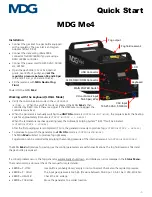
23
2.12.3
Adjusting the material support arm
1. Turn the main shaft until the needle tip stands 1
–
2 mm behind the centre of
the presser.
2. Adjust the control knob
(4) figure 12
so that the needle is lifted by 0.2 mm,
then screw in the threaded pin
(5) figure 12
until it lies against the case.
Next, counter the threaded pin
(6) figure 12
.
The material support arm must be adjusted to have no axial backlash.
2.13
Interval gear (figure 12)
Every second rotation, interval gear 1:2 lowers the material support arm
(presser) by the value given by the interval stroke control.
2.13.1
Setting the interval gear (figure 12)
CAUTION!
Switch off the machine electrically!
1. Set the stitch depth until the desired stitching results are achieved.
2. Turn the regulating button for intervals
(3) figure 12
clockwise until the
desired interval stroke is achieved.
Summary of Contents for BM 345
Page 1: ...PRODUCED BY INDUSTRIAL SEWING MASCHINES BM 345 Mechanic s Instrutions ...
Page 2: ...2 ...
Page 4: ...4 ...
Page 15: ...15 Figure 5 Figure 6 ...
Page 24: ...24 Figure 12 ...



































